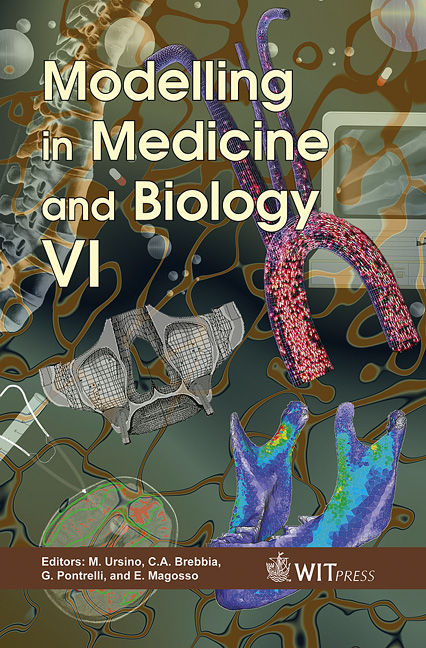Performance Assessment Of Embolic Protection Filters For Carotid Artery Stenting
Price
Free (open access)
Transaction
Volume
8
Pages
10
Published
2005
Size
330 kb
Paper DOI
10.2495/BIO050131
Copyright
WIT Press
Author(s)
E. A. Finol1, C. M. Scotti, I. Verdinelli, C. H. Amon & M. H. Wholey
Abstract
Stroke is the third leading cause of death in the United States, accounting for 1.5 deaths reported per 1000 people. Carotid artery stenting (CAS) with cerebral protection is slowly becoming the gold standard for treatment of carotid artery occlusive disease in high risk patients. CAS is based on the selective cannulation of the common carotid artery by means of an introducer sheath or guiding catheter and the deployment of a wire mesh (stent) to treat the occluded artery segment. The goal for CAS is the prevention of stroke and its efficacy depends greatly on the periprocedural complications. The major concern with CAS is its potential to produce emboli that may translate into a severe neurological disorder. In this regard, several cerebral protection devices (CPDs) have been developed recently as an adjunct to CAS, with the primary function of capturing the plaque particles released from the site of vessel injury to prevent neurological events. A category of CPD that has received recent attention due to its ability to allow continued distal perfusion is the embolic protection filter. We tested in vitro one FDA approved (RX Accunet Embolic Protection System, Guidant Corporation, Indianapolis, IN) and two investigational (FilterWire EZ, Boston Scientific, Natick, MA and Angioguard XP, Cordis Corp., Coral Gables, FL) devices of this kind. The objective of this study was to assess the effectiveness of emboli capture of the devices, investigate potential intangible failure modes and complications, and set a baseline of desirable design parameters for future generations of embolic protection filters. None of the devices tested completely prevented embolization into the artery model. Overall, the RX Accunet device had the best filtration performance, failing to capture 0.16% of plaque particles when deployed in an artery model of 5.5 mm in diameter. Several complications related to device retrieval were detected in all devices on any given set of testing scenarios. Crossing profile, opening/closing mechanics and pore size were among the key design variables required for improved device designs. Keywords: cerebral protection device, embolic protection, carotid artery stenting.
Keywords
cerebral protection device, embolic protection, carotid artery stenting.





